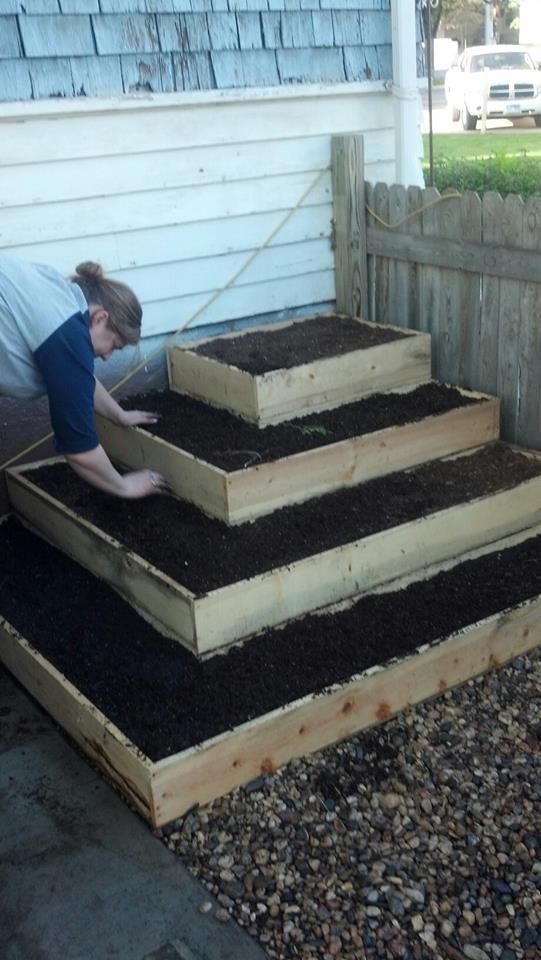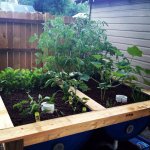So there is hope for us all! Great looking little garden.
Thank you. We have started getting cucumbers now, just got three big ones tonight. Tomatoes have started to turn color a little bit. Looking forward to the coming salads.

Follow along with the video below to see how to install our site as a web app on your home screen.
Note: This feature may not be available in some browsers.
So there is hope for us all! Great looking little garden.
I don't know shit about gardening but I feel I have a good sense for design. We made this last week for my shooting buddy's wife.

thanks!
the wife is already running around with the tape measure..haha
gives me an excuse to hit the home depot
OverWatch, my only thoughts are, that the 'back to eden' system looks very interesting. Still researching more into the Mittleider one, but the 'mulch' thing is theoretically very impressive. I say "theoretic", because I have NO experience with it, and only know of it now through this venue.
Impressive though, to say the least. Growing food, the natural way. It's only been happening for Eons and Eons, so there must be something right about it. Now if only I can adapt this process to a gibble like me, (who can't bend) then I'll be golden. Table-top gardening!! woo hoo.
I usually save up the taters that start going bad, and just poke them into the ground wherever I have an extra corner, or nothing growing. It is merely an alternative to throwing them out, and the reward may only be 3 little taters, but that beats just one thrown out... I figured that putting lots of work into them defeats the whole idea of freebie taters from things I would have thrown out anyhow. It is surprising how many volunteers pop up the next year. I really love the fresh, young ones about 1-2 inches around..Over time, I get so many volunteers, it is almost like having blackberries around that always produce, even if I do nothing to promote them.
Years ago I was told that you know when it is time to dig up the taters when the tops start dying off.
Nice Idea. And, yes, when the tops die, then the potatoes are ready. In NH, we used to allow them to sit in the ground for a week after the tops completely died---I think it helps to "season" the potatoes for root cellar storage. Then we would harvest them, allow the dirt to dry, brush them gently to get the loose dirt off but not hurt the skin, and bag them up for storage in the root cellar. We ate nice, home-grown potatoes into March and sometimes April...
I don't have pics of it, but in our garden, (pics in previous post), I placed a 25' drip hose. This is on a timer, which can be programmed for seven days, and water for a pre-determined time every (you decide) how often..... This keeps the plant growth dry while providing ample water for the root systems to use.Nice post, some good information. anyone else use a drip system and have some pictures? I use a 50" drip hose and it is much better than a sprinkler.
OW
I don't have pics of it, but in our garden, (pics in previous post), I placed a 25' drip hose. This is on a timer, which can be programmed for seven days, and water for a pre-determined time every (you decide) how often..... This keeps the plant growth dry while providing ample water for the root systems to use.
Do you know what brand your timer is? I have been looking at them and have seen mixed reviews on what brand is the most reliable.
Thanks
OW
Saw on TV BlackBerry plants ( as seen on tv) so sent away, received three sticks with some roots ONLY one came up now about three feet long don't think any berrys this year.
It will get long and eventually bend over to touch the ground. At that point, it will form roots where it touches the ground to start a new plant. They spread naturally that way. You can help it along if you wanted. Slightly scape the stem where it touches the ground, dab a little water on it and sprinkle w/ root-tone
(if you live in CA, don't let the root-tone touch you're skin because it's bad for you; if you live in another State, you'll be OK).
Freshen the soil up a little w/ a soil amendment and use a sod staple or piece of bent wire to hold the stem to the soil and add a small amount of light soil (like peatmoss) on top. Next spring, cut the main stem from the original plant loose from the new one. Next year you'll have two and you can double them every year.
Probably not. Are your vines setting any fruit?
Cheers,
Tim
The Right to Keep and Bear Arms Shall NOT be Infringed
We had the wood on hand. Used one saw a screw gun. Two guys working together got that knocked out in like 1.5hrs. We had a hand drawn sketch as an outline with only the bottom frame as a hard dimension and the understanding she wanted 12" wide beds.
A guy who's good with tools and woodworking should beat us. I think we wound up needing 3 sheets of plywood for bases of the boxes. If you can cut boards into a box and then make cross braces then measure and cut a sheet of plywood for a bottom your done.
Oh! We uses a sawzall to notch 3 boards total. Under the soil is a board that you can't see cuz its notched to create the "L" shape and still provide structure to the frame.

Real easy man project.
Does anyone around here do any growing indoors, during the winter? (keeping the thread on track here) With what they have for grow lights and whatnot, this has been an idea. My Lady uses so many herbs in her cooking that the idea of a 'continuous supply' of fresh cilantro, rosemary, parsley, thyme, sage, and whatnot would be good.
And since the winters up here are so long, this thread just adds to the "grow-yer-own, year 'round" idea. (Again though, lets keep this thread on track)
The one thing that I'm hesitant about though, is a few years ago we had a fair number of plants in the house. Crown-of-Thorns, to be specific. But then we got gnats. Little bastards are near impossible to get rid of, short of a flamethrower. Either that, or we hadn't learned 'the trick' yet of something.
Anyone know of how to deal with that issue, for any indoor planting? Again, with the short season that we have here, (aka Long Winter) as well as my limited mobility,,, this is the direction that seems more viable.



